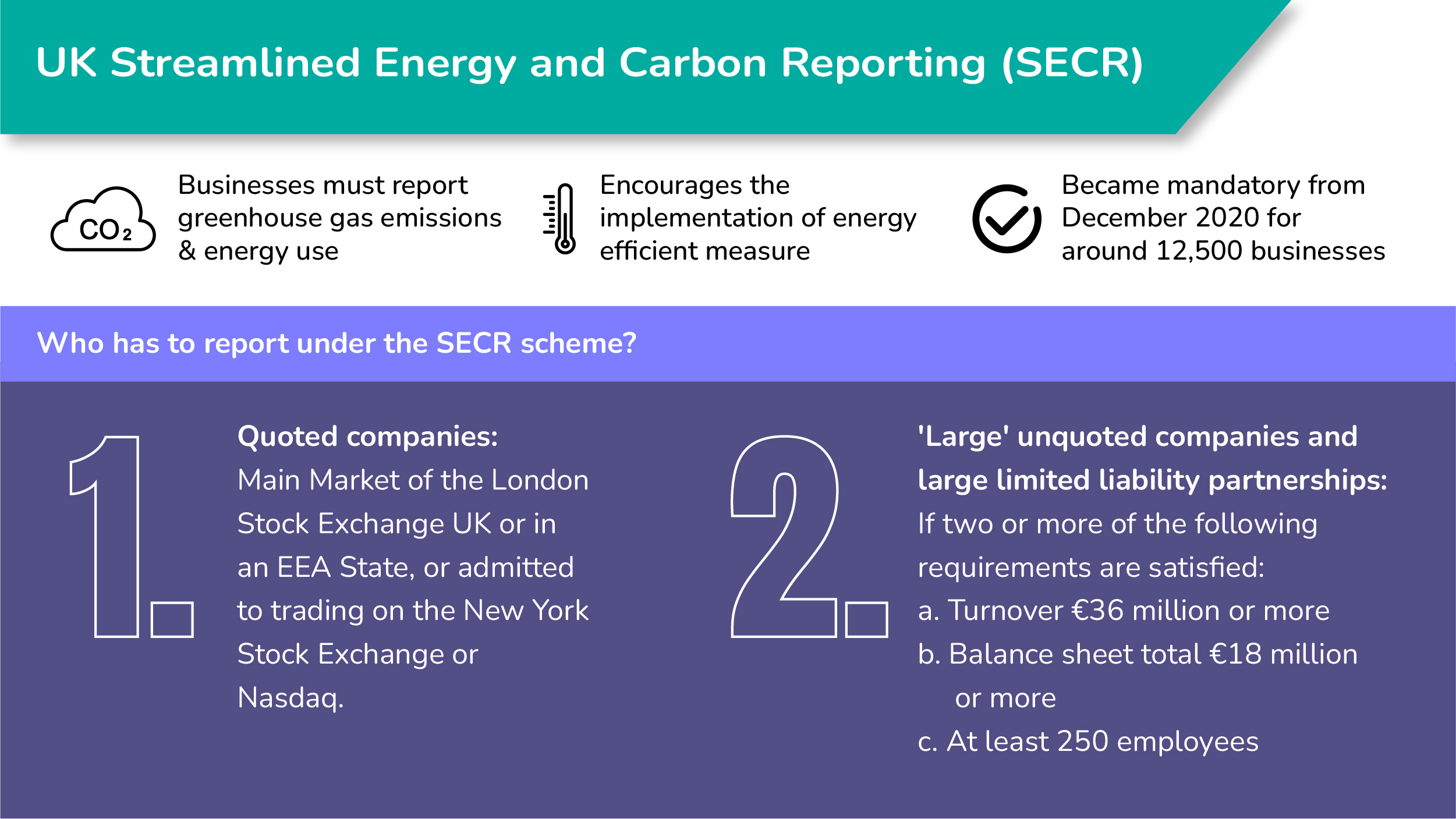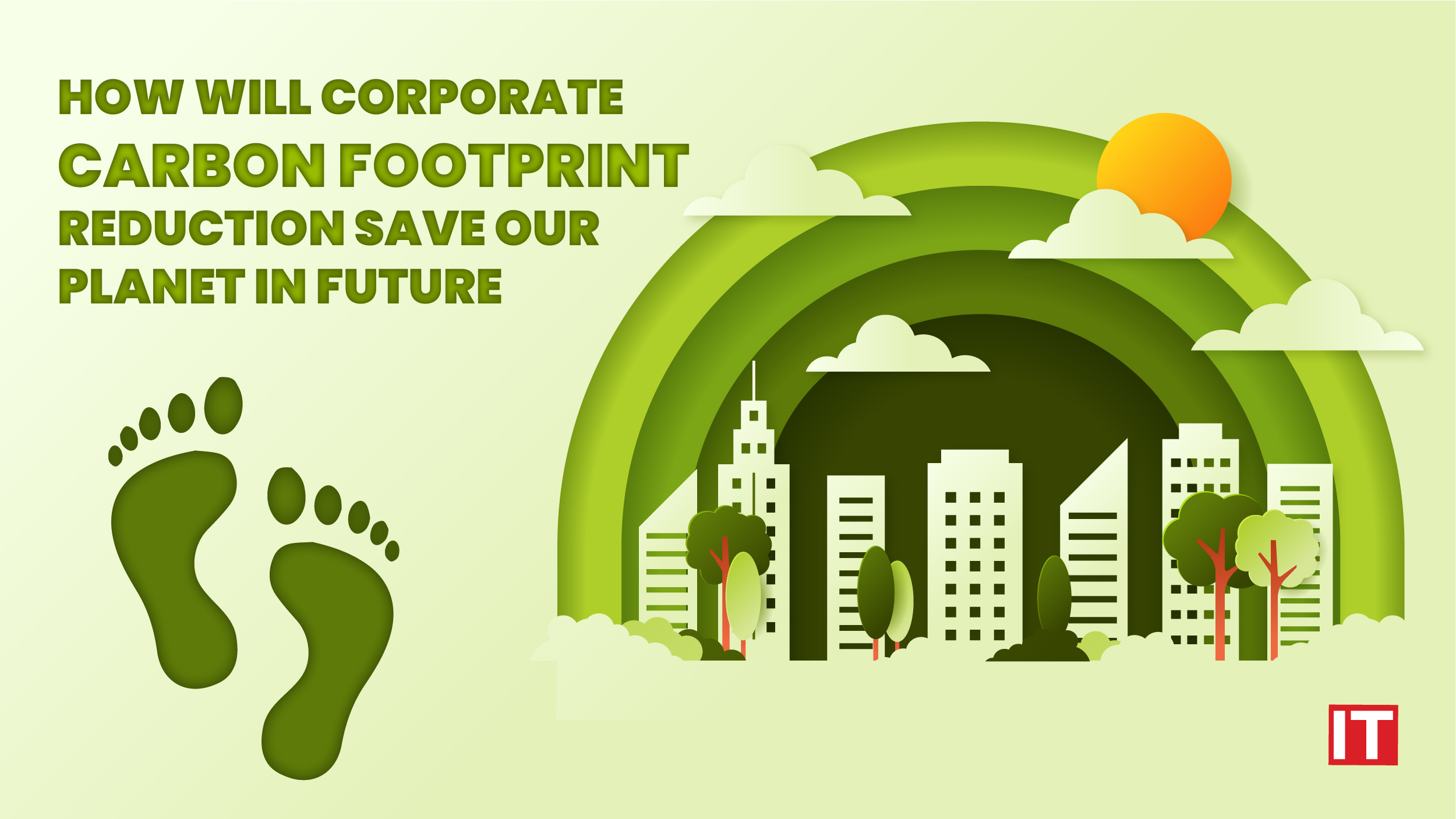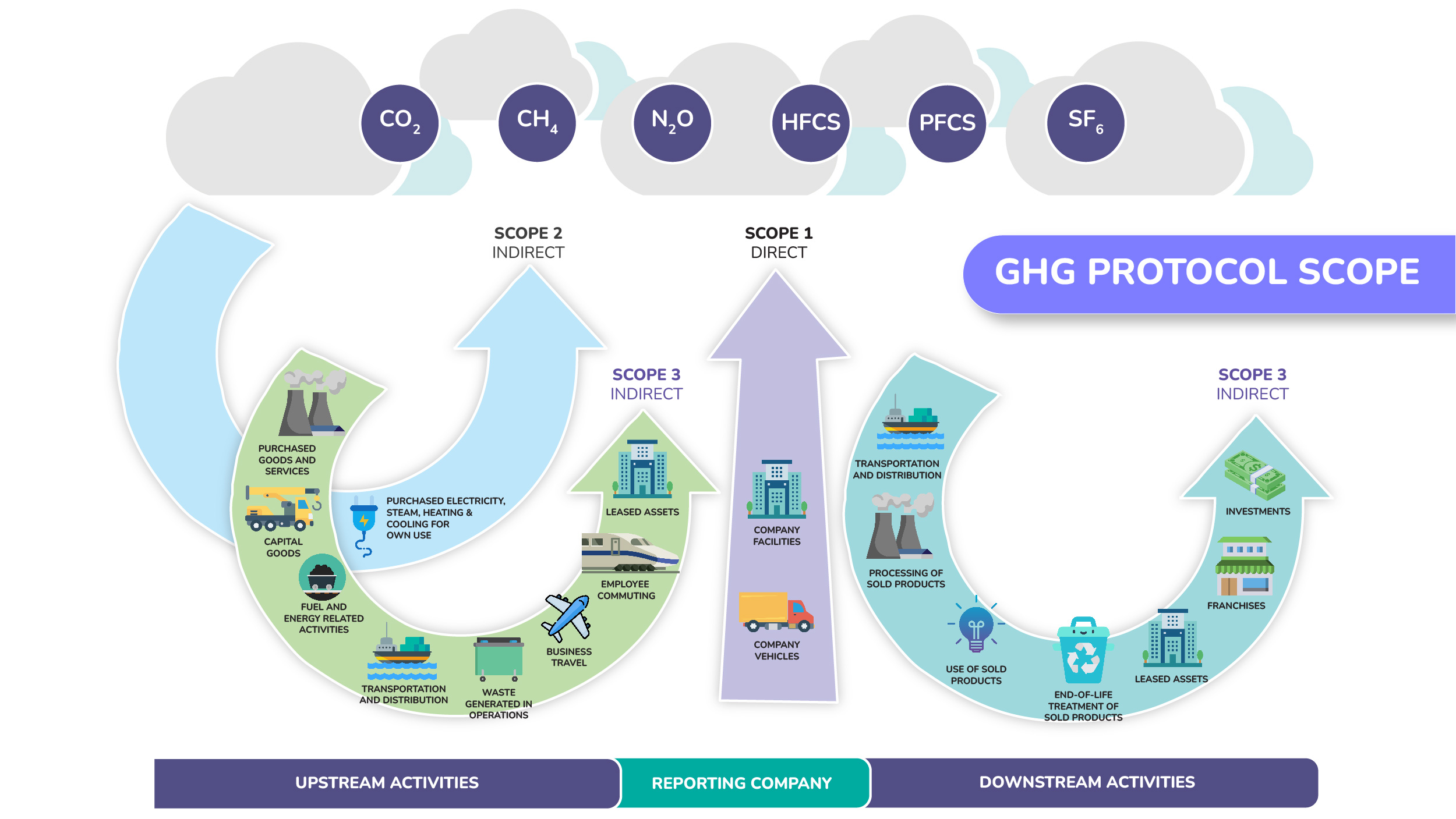Climate change is real and is already here!
Despite what conspiracy theorists might be thinking and governments planning to do about it, environmentalists are urging everyone to shift to sustainability.
To be honest, we can’t ignore the necessity of going sustainable in this rapidly changing climate crisis. In this scenario, when discussing individual contribution, everyone is trying to do what they can.
Now, the ball is in the court of corporations to do their bit in bringing about sustainability.
An increasing number of environmentally minded businesses are working toward aggressive carbon reduction goals in order to become carbon neutral. In actuality, net-zero targets are now set for more than one-third of the biggest publicly traded corporations in the world. But only the identification and measurement of emission dense hotspots will allow for a systematic reduction in greenhouse gas (GHG) emissions.
The Corporate Carbon Footprint provides businesses with a tried-and-true technique to identify emission hotspots and opportunities for reduction. This piece will explain what a corporate carbon footprint is, how to calculate one, and the benefits it can have for your company.
What is a Carbon Footprint for the Corporate?
The entire volume of GHG emissions that are either directly or indirectly brought on by a company’s operations is known as the corporate carbon footprint (CCF), otherwise known as a company’s carbon footprint. The first step toward carbon neutrality is often to calculate the CCF since it identifies your emissions hotspots.
Effective climate objectives and mitigation plans are impossible to develop without visibility into the locations of those hotspots and the contributions that your business activities are making.
When we consider a simple bottle of water consumed in your business, for instance, the carbon footprint includes all greenhouse gas emissions created for the sourcing of the water, the manufacturing of the bottle, and its transportation, as well as all the tasks completed in the water company that are required for that bottle to be produced and sold to you.
The carbon footprint trail might be long, but a necessary one to curb as much carbon emission as possible.
What is the Corporate Carbon Footprint Calculator?
The measured or projected consumption data and emissions variables known as CO2 equivalents are typically used to calculate a company’s carbon footprint. These include CO2, the most prevalent greenhouse gas by volume, as well as the CO2 equivalents of methane and nitrous oxide. Herein, natural gas, oil, biomass, power, fuel, paper, and other materials are among the primary sources of emissions.
The process of calculating a company’s carbon footprint is perpetual. However, this information is updated annually with the intention of gradually lowering emissions through emission control measures, while continuously keeping track of actual emissions. An ideal instrument for long-term management of operational climate protection measures, the carbon footprint calculation process is a cycle of continual development.
All of the organization’s total emissions, both direct and indirect, make up the carbon footprint of a corporation. So, within clearly defined system bounds, the company’s emissions must be thoroughly recorded and analyzed. The study assigns emissions to organizational units, processes, products, and services after computing emissions using accessible data, such as consumption figures.
Also Read: How is CPaaS Empowering and Changing Communication Paradigm Across Businesses
The majority of the time, information from company-controlled operations is well-documented and accessible. The GHG emissions for each activity can be estimated by combining this activity data with the appropriate emission coefficients. Some information, such as the production or service activities carried out by your suppliers, may be more challenging to get, but they are crucial for a precise computation.
The international ISO 14064 standard serves as the basis for calculating carbon footprints, and the three GHG Protocol scopes are utilized to distinguish between various sources of emissions.
Carbon Footprint = Emission Factor x Activity Data
Data of the activity is trifurcated into 3 main scopes:
Scope 1: The direct greenhouse gas emissions that a firm controls fall under this definition. Examples of this include fuel use in manufacturing, refrigerant systems, on-site waste facilities, heating, process equipment, and automobiles, as well as manufacturing, refrigerant systems, and fugitive emissions.
Scope 2: These are the indirect emissions linked to the organization’s energy acquisition and usage. Lighting, tools, water heaters, and other examples come to mind.
Scope 3: These are the emissions of greenhouse gasses that a company can affect but not in any way take control over. Transportation of purchased fuels, business travel, employee commuting in cars not owned by the company, and the transportation of raw materials used to produce products all fall under this category. The scope is frequently the broadest and the hardest to quantify.
What is the GHG Protocol?
The consideration of permanent climate change has come with its own silver lining as the GHG Protocol was introduced as an initiative to curb the damaging effects of corporate operations.
With the help of this GHG Protocol Corporate Standard, businesses and other organizations can create an inventory of their GHG emissions. It addresses the recording and reporting of the six greenhouse gasses specified by the Kyoto Protocol: sulfur hexafluoride (SF6), hydrofluorocarbons (HFCs), perfluorocarbons (PFCs), nitrous oxide (N2O), and methane (CH4) (SF6).
This guideline was primarily created from the viewpoint of a company creating a GHG inventory. However, it also applies to other sorts of organizations, such as NGOs, governmental organizations, and colleges, whose operations result in GHG emissions.
In addition to correctly implementing the aforementioned criteria, it is crucial to adhere to the fundamental principles outlined in the GHG protocol, which are relevance, completeness, consistency, transparency, and accuracy. These principles are similar to those of financial reporting.
Few nations already have specialized structures and procedures to make reporting the corporate carbon footprint easier.
Use Case – Streamlined Energy and Carbon Reporting (SECR) of UK
With SECR, more UK businesses can now take advantage of carbon and energy reporting’s advantages. The reporting system promotes energy efficiency initiatives because they are advantageous for the environment and the economy. The legislation, which replaced the role of the Carbon Reduction Commitment (CRC) plan, is meant to assist businesses in increasing productivity and lowering costs while lowering carbon emissions.

How to Reduce Corporate Carbon Footprint in 2023?
You can start looking for carbon reduction opportunities once your CCF analysis is complete and all the emissions produced by your business have been identified. The CCF is a solid starting point for developing and putting into practice carbon reduction strategies because it considers all emission sources. Every organization will take a different approach to lowering and offsetting its carbon footprint, however a few typical methods include:
Reducing Energy Consumption
If every office equipment purchased in the US was ENERGY STAR certified, nearly 1.5 billion pounds of greenhouse gas emissions would be avoided, according to the EPA.
The average carbon footprint of a corporation is accounted for by its energy use. Reduced energy use at a facility lowers costs associated with energy bills as well as the environmental load that a firm is accountable for. There are numerous methods to make tiny adjustments, including installing energy-efficient lighting, employing energy-efficient appliances, or moving to a green web hosting provider. These minor adjustments themselves could have a significant effect.
Eliminating Over Consumption
A key strategy for including employees in the reduction of consumption of goods like plastic, food and drink packaging, and electrical appliances is to encourage them to consider sustainable buying.
Food waste reduction is also crucial. Food waste is produced, transported, and handled in a way that produces a considerable amount of greenhouse gas emissions. When food waste is disposed of in a landfill, methane is produced, which has an 80-fold greater warming potential than carbon dioxide over a 20-year period.
Traveling to Work
Does your organization offer work-from-home days?
According to an International Energy Agency (IEA) study, remote working will reduce emissions for workers who drive more than 3.7 miles to work each way, despite using more energy at home. If your organization has not already implemented this working style to assist reduce your emissions, it is worth considering now that more companies offer hybrid or remote working.
In 2019, 27% of all emissions in the UK came from transportation. The majority of this comes from motorized transportation. Companies can assist expedite the effort to cut CO2 emissions by providing EV charge points or switching their corporate fleets to electric vehicles, which emit about a third less CO2 than gasoline-powered vehicles.
Tracking Your Digital Footprint
According to research, a normal email emits about 4g of CO2, and one with a larger attachment could emit ten times that much CO2.
Being mindful of how you use digital systems is therefore important.
Encourage your staff to think about whether certain emails need to be sent as a first step. Encouragement of file transfer websites rather than attachments can also assist your business leave a less carbon footprint.
Supply Chain Efficiency
Your “scope 3 emissions” include suppliers for your company or customers you provide goods or services to. As a result, it’s crucial that you collaborate with companies who share your values and aspirations for lowering your carbon impact.
The supply chain of a company is rife with chances to reduce carbon footprint due to the number of interconnected components. It happens frequently that ineffective operations squander time, money, and resources. Directly enquire with suppliers to see whether they have measurable data on the greenhouse gas emissions they produce.
Several significant businesses have already pushed for greater openness from their suppliers. The CDP claims that in order to lower their environmental risks and lower carbon emissions throughout their supply chains, Walmart, CVS Health, and Target have begun gathering information from their suppliers.
Conquering Zero Corporate Carbon Footprint
According to experts, in addition to traditional financial indicators, CO2 emissions will soon replace them as the most important environmental indicator for preserving the climate, for banks, auditors, investors, clients, and, last but not least, lawmakers and regulators.
The good news is that methods to calculate this indicator exist and have been widely tried and tested!
Carbon footprints help firms better understand their own operations, the operations of their suppliers, and the operations of their customers by highlighting emissions hotspots and potential improvements. This approach instead produces information that is helpful to product innovators as well as experts in procurement, production, marketing, and sales.
Future-focused criteria like eco-friendliness and sustainability will give businesses significant competitive advantages.
Employees may be the biggest asset in lowering carbon footprints with the right training. Real results can only be attained with the unwavering devotion of every employee, from the top to the bottom of the business.
Make a public commitment to cut carbon emissions, and make sure that your staff is aware of it and knows what they can do to support you. Workplace education programs that include webinars, workshops, and signs are all successful. Real progress may be made when everyone participates.
Customers are increasingly opting to support businesses that are socially responsible and actively working to lower their carbon footprint. When aiming to be more sustainable, there are various important areas to focus on, like reducing energy use, plastic usage, transportation, supply chain transparency, and education, to mention a few.





































